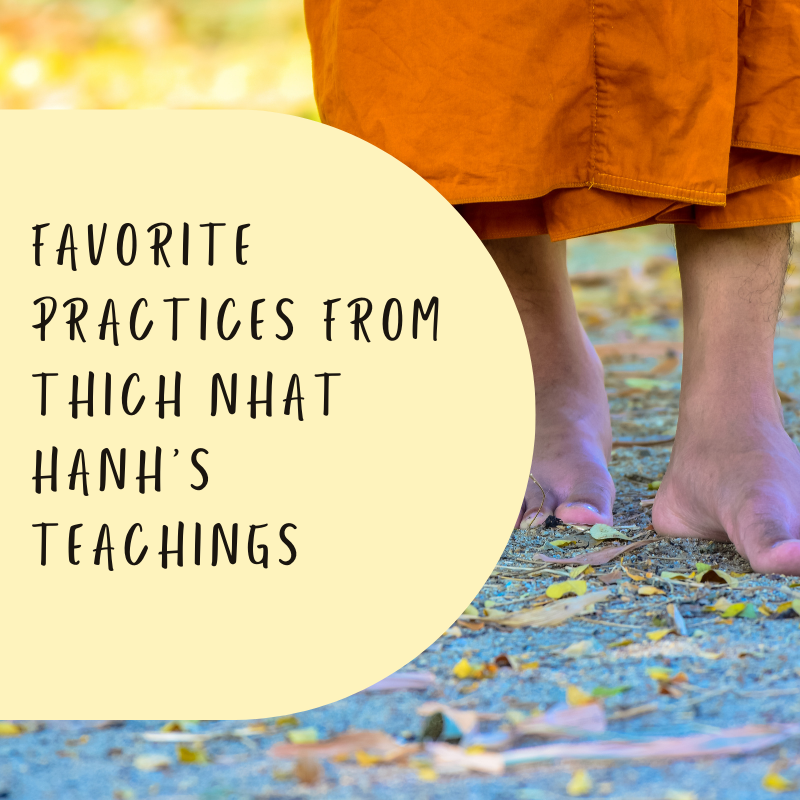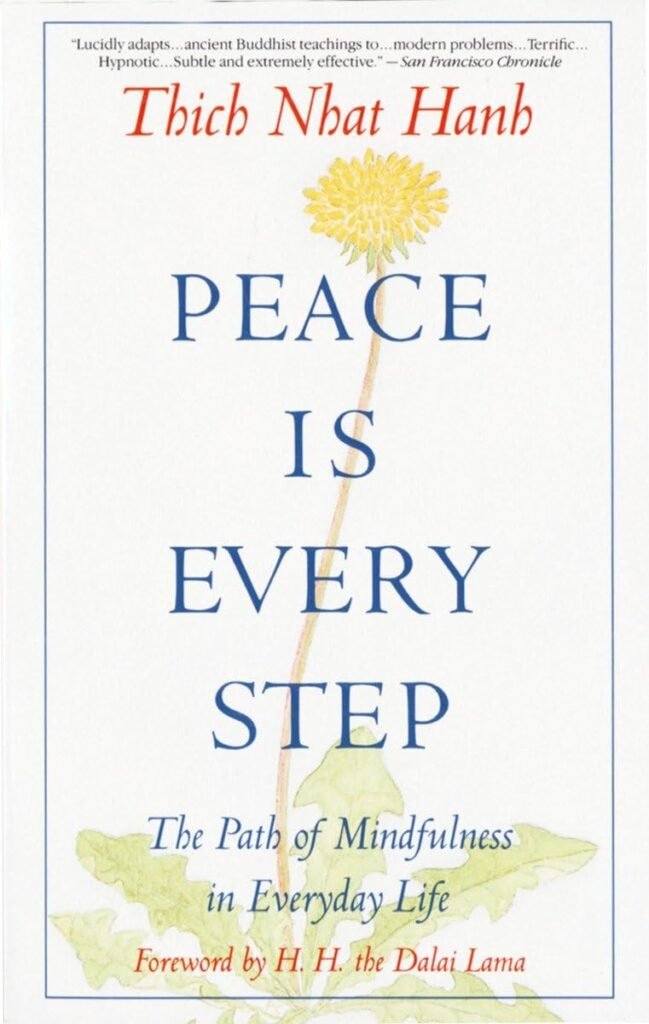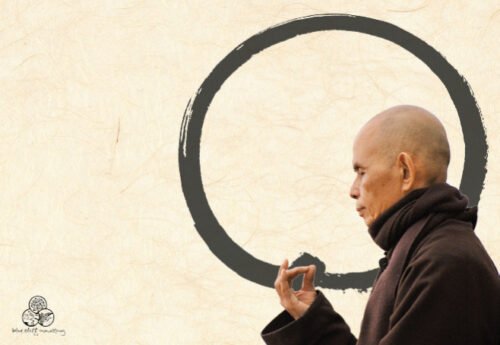Favorite Practices from Thich Nhat Hanh’s Teachings

Thich Nhat Hanh’s teachings offer simple yet profound ways to bring mindfulness into everyday life. His practices aren’t about escaping reality but about fully embracing each moment, no matter how busy or chaotic life may seem. Once you start practicing them, they naturally weave into your daily routine—you’ll find yourself using them effortlessly. Here are three of my favorite mindfulness practices, drawn from his book Peace Is Every Step.
1. Conscious Breathing: The Foundation of Mindfulness
Conscious breathing is the simplest and most accessible mindfulness practice. Thich Nhat Hanh often reminded us that our breath is always available—it’s an anchor to the present moment.
“Feelings come and go like clouds in a windy sky. Conscious breathing is my anchor.”
By simply paying attention to your inhale and exhale, you unite mind and body, allowing yourself to be fully present. Whether you’re sitting in meditation or waiting in line at the store, conscious breathing is always there to bring you back to yourself.
2. Bells of Mindfulness: Everyday Reminders
Mindfulness bells are external cues that remind us to pause and return to the present. Traditionally, Thich Nhat Hanh suggested using the sound of an actual bell, like a church bell or a clock chime. However, anything can be a bell of mindfulness.
Personally, I use something I see in nature—a tree swaying in the wind or the sight of a bird in flight—as my reminder. This keeps me from relying on my phone, which we already check too often. You can choose whatever works best for you—a door closing, laughter, or even a red light while driving. Each time your bell appears, take a deep breath and return to the present moment.
3. Walking Meditation: Finding Peace in Movement
Thich Nhat Hanh taught that walking can be a meditation in itself. Rather than rushing to your destination, walking meditation allows you to fully experience each step. With each movement, you breathe in and out, feeling the connection between your body and the earth.
“Walk as if you are kissing the Earth with your feet.”
I still practice this every time I go for a walk. It turns even the simplest stroll into an opportunity to reconnect with myself and the world around me. Whether you’re in a park, a city, or simply walking to your car, you can bring mindfulness into each step.
Incorporating These Practices Into Daily Life
The beauty of these practices is that they require no special conditions. Whether you’re breathing, walking, or hearing a bell, mindfulness is always within reach. Over time, these small habits naturally become part of your life, helping you feel more present, calm, and connected.
Want to dive deeper into these teachings? Listen to our latest podcast episode where we explore Thich Nhat Hanh’s mindfulness practices in more detail.
Happy practicing! 🌿
Thich Nhat Hanh’s teachings offer simple yet profound ways to bring mindfulness into everyday life. His practices aren’t about escaping reality but about fully embracing each moment, no matter how busy or chaotic life may seem. Once you start practicing them, they naturally weave into your daily routine—you’ll find yourself using them effortlessly. Here are three of my favorite mindfulness practices, drawn from his book Peace Is Every Step.
1. Conscious Breathing: The Foundation of Mindfulness
Conscious breathing is the simplest and most accessible mindfulness practice. Thich Nhat Hanh often reminded us that our breath is always available—it’s an anchor to the present moment.
“Feelings come and go like clouds in a windy sky. Conscious breathing is my anchor.”
By simply paying attention to your inhale and exhale, you unite mind and body, allowing yourself to be fully present. Whether you’re sitting in meditation or waiting in line at the store, conscious breathing is always there to bring you back to yourself.
2. Bells of Mindfulness: Everyday Reminders
Mindfulness bells are external cues that remind us to pause and return to the present. Traditionally, Thich Nhat Hanh suggested using the sound of an actual bell, like a church bell or a clock chime. However, anything can be a bell of mindfulness.
Personally, I use something I see in nature—a tree swaying in the wind or the sight of a bird in flight—as my reminder. This keeps me from relying on my phone, which we already check too often. You can choose whatever works best for you—a door closing, laughter, or even a red light while driving. Each time your bell appears, take a deep breath and return to the present moment.
3. Walking Meditation: Finding Peace in Movement
Thich Nhat Hanh taught that walking can be a meditation in itself. Rather than rushing to your destination, walking meditation allows you to fully experience each step. With each movement, you breathe in and out, feeling the connection between your body and the earth.
“Walk as if you are kissing the Earth with your feet.”
I still practice this every time I go for a walk. It turns even the simplest stroll into an opportunity to reconnect with myself and the world around me. Whether you’re in a park, a city, or simply walking to your car, you can bring mindfulness into each step.
Incorporating These Practices Into Daily Life
The beauty of these practices is that they require no special conditions. Whether you’re breathing, walking, or hearing a bell, mindfulness is always within reach. Over time, these small habits naturally become part of your life, helping you feel more present, calm, and connected.
Want to dive deeper into these teachings? Listen to our podcast episode where we explore Thich Nhat Hanh’s mindfulness practices in more detail.
Happy practicing! 🌿


